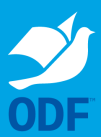Updated: The deadline for filing comments has been extended to 1700 GMT on Friday, February 28
 Last week I highlighted the fact that Microsoft was urging its business partners to comment at the British Cabinet Office's Standards Hub on a standards-related proposal. That proposal would limit government procurement to office software that complied with the ISO ODF standard, but makes no mention of the ISO OOXML standard promoted by Microsoft. I also noted that anyone could comment on the proposal, and that the deadline for comments would close on February 26, Greenwich time. I closed by urging readers to let their opinions on the subject be heard.
Last week I highlighted the fact that Microsoft was urging its business partners to comment at the British Cabinet Office's Standards Hub on a standards-related proposal. That proposal would limit government procurement to office software that complied with the ISO ODF standard, but makes no mention of the ISO OOXML standard promoted by Microsoft. I also noted that anyone could comment on the proposal, and that the deadline for comments would close on February 26, Greenwich time. I closed by urging readers to let their opinions on the subject be heard.
Having so urged, I could hardly forego offering my own comments as well, and now I have done exactly that. What follows is the text I uploaded there, and perhaps it will help motivate you to contribute as well if you have not already done so.
Our story so far: Our hero, Frank Adversego is trying to catch a hacker threatening the Library of Congress, whose motives remain obscure. But the pursuer is about to become the pursued. Read the first chapter here, and follow the Further Adventures of Frank on Twitter.
 While Frank was enjoying himself spear phishing venture capitalists, back at the Library of Congress files were flashing out of virtual view like fireflies on a summer’s eve. One by one, documents important and banal, short and long, drifted silently off in the digital darkness to points unknown, leaving only Alexandria Project contribution screen code behind.
While Frank was enjoying himself spear phishing venture capitalists, back at the Library of Congress files were flashing out of virtual view like fireflies on a summer’s eve. One by one, documents important and banal, short and long, drifted silently off in the digital darkness to points unknown, leaving only Alexandria Project contribution screen code behind.
Thus it was that at 10 on Friday morning, Frank’s office phone buzzed, and he heard the receptionist say, “Your turn, Frank. Conference room two.”
Frank logged off his computer and stood up with a thoughtful look on his face. Just enough time for a little self-coaching as he walked down the hallway. Stay cool, he thought. Be calm. You don’t have anything to worry about, so just tell the news.
Updated: The deadline for filing comments has been extended to 1700 GMT on Friday, February 28
 As you may be aware, the UK Cabinet Office has been engaged in the long and careful development of an updated open standards policy to guide government procurement of ICT goods and services. A few weeks ago, a senior government minister received great attention when he announced that the Cabinet Office hoped to give preference in the future to purchasing open source office suite software implementing the OpenDocument Format (ODF) standard.
As you may be aware, the UK Cabinet Office has been engaged in the long and careful development of an updated open standards policy to guide government procurement of ICT goods and services. A few weeks ago, a senior government minister received great attention when he announced that the Cabinet Office hoped to give preference in the future to purchasing open source office suite software implementing the OpenDocument Format (ODF) standard.
This intention, however, is not a done deal. Rather, the rules that would establish this preference are currently only in the proposal stage, and all elements of that proposal can be changed or deleted, based upon comments posted at the Cabinet Office’s public Standards Hub Web site by businesses, citizens and others. And the deadline for commenting on those proposals is fast approaching: February 26.
 Last week Peter Levine, former XenXource CEO and current Andreesen Horowitz partner, wrote an article for TechCrunch titled Why There Will Never be Another RedHat: The Economics of Open Source. In that article he makes a reasonable case for opining that the likelihood of another company achieving RedHat-scale success based on wrapping services around an open source offering is very low. Instead, he proposes that the model that can lead to significant success is to include open source components in a service that includes additional (presumably proprietary) functionality and/or services.
Last week Peter Levine, former XenXource CEO and current Andreesen Horowitz partner, wrote an article for TechCrunch titled Why There Will Never be Another RedHat: The Economics of Open Source. In that article he makes a reasonable case for opining that the likelihood of another company achieving RedHat-scale success based on wrapping services around an open source offering is very low. Instead, he proposes that the model that can lead to significant success is to include open source components in a service that includes additional (presumably proprietary) functionality and/or services.
 Last time I promised to talk about setting up Twitter and Facebook pages. For many people this should be the easiest part of establishing a Web presence, since so many folks already use one or both services. If you’re one of them , the biggest challenge may be to unlearn existing habits and start using social media in a very different and more purposeful way than before (after all, unless your book is about LOL cats, pointers to their Youtube videos isn’t likely to help sell your book). If you’re not, the biggest challenge won’t be setting up the pages (which is easy) but finally taking the plunge into a bottomless pit that you may understandably have been scrupulously avoiding for a long time. Like me.
Last time I promised to talk about setting up Twitter and Facebook pages. For many people this should be the easiest part of establishing a Web presence, since so many folks already use one or both services. If you’re one of them , the biggest challenge may be to unlearn existing habits and start using social media in a very different and more purposeful way than before (after all, unless your book is about LOL cats, pointers to their Youtube videos isn’t likely to help sell your book). If you’re not, the biggest challenge won’t be setting up the pages (which is easy) but finally taking the plunge into a bottomless pit that you may understandably have been scrupulously avoiding for a long time. Like me.
For more than a decade there has been active resistance in some quarters to the continuing custody by the U.S. of the root domain registries of the Internet. Those directories (which control the routing of Internet traffic into and out of nations) are administered by ICANN, which in turn exists under the authority of the U.S. Department of Commerce. Today, Neelie Kroes, the strong-willed European Commission Vice-President in charge of the E.C.’s Digital Agenda, has put the question of “Internet Governance” (read: control of these registries) back into the news. Specifically, Kroes announced in a press release that the Commission will pursue a “role as honest broker in future global negotiations on Internet Governance.”
 Ten years ago this month I wrote an issue of Standards Today in which I predicted that the traditional practice of developing standards would no longer be sufficient to provide solutions to information and communications technology (ICT) challenges. The reason I gave was that many problems demanding resolution would be too complex, too cross-sectoral, and too urgent for the old way of doing things to suffice.
Ten years ago this month I wrote an issue of Standards Today in which I predicted that the traditional practice of developing standards would no longer be sufficient to provide solutions to information and communications technology (ICT) challenges. The reason I gave was that many problems demanding resolution would be too complex, too cross-sectoral, and too urgent for the old way of doing things to suffice.
 In the last post, we talked about the different types of Web sites you can create or take advantage of. In this entry, we’ll talk about actually creating the Web-based pages you’ll need to sell your self-published book, leaving to a later date how to create and manage more social-media oriented pages such as Twitter and Facebook.
In the last post, we talked about the different types of Web sites you can create or take advantage of. In this entry, we’ll talk about actually creating the Web-based pages you’ll need to sell your self-published book, leaving to a later date how to create and manage more social-media oriented pages such as Twitter and Facebook.
Setting up the pages discussed below is well within the abilities of most authors, even if you don’t consider yourself to be very tech-savvy. But as a client of mine often observes in similar settings, “Says easy, does hard.” That’s particularly true when it comes to Web-based promotion, because you should not – must not – assume that if you simply build it, that they will come.
 It was ten years ago that the CIO of Massachusetts rattled the desktop world by announcing that the Executive Agencies of the Commonwealth would henceforth license only office suite software that complied with the OpenDocument Format. The shock waves that followed were attributable to the fact that while the open source OpenOffice office suite was built around that standard, the dominant product – Microsoft’s venerable Office suite did not.
It was ten years ago that the CIO of Massachusetts rattled the desktop world by announcing that the Executive Agencies of the Commonwealth would henceforth license only office suite software that complied with the OpenDocument Format. The shock waves that followed were attributable to the fact that while the open source OpenOffice office suite was built around that standard, the dominant product – Microsoft’s venerable Office suite did not.
Yesterday, the UK Cabinet Office blew some life back into the embers left behind by what was one of the most epic standards wars in history (you can follow that saga from the beginning here and the first five chapters of a book I started to write about it here).
 It’s obvious that any self-published author needs a Web presence. Why? Because promoting your books at many venues is free and most of the rest are cheap, and the Internet is where people go to find out anything and everything.
It’s obvious that any self-published author needs a Web presence. Why? Because promoting your books at many venues is free and most of the rest are cheap, and the Internet is where people go to find out anything and everything.
And that’s great, isn’t it? In the old days, an author without a publisher had virtually no way to reach the marketplace at all. The problem now is that there are so many Internet-based avenues to choose from that it’s hard to know which to use, where to begin, and how to get the most out of each one. That’s what we’re going to talk about today, and for the next few posts in this series.
 Last week I highlighted the fact that Microsoft was urging its business partners to comment at the British Cabinet Office's Standards Hub on a standards-related proposal. That proposal would limit government procurement to office software that complied with the ISO ODF standard, but makes no mention of the ISO OOXML standard promoted by Microsoft. I also noted that anyone could comment on the proposal, and that the deadline for comments would close on February 26, Greenwich time. I closed by urging readers to let their opinions on the subject be heard.
Last week I highlighted the fact that Microsoft was urging its business partners to comment at the British Cabinet Office's Standards Hub on a standards-related proposal. That proposal would limit government procurement to office software that complied with the ISO ODF standard, but makes no mention of the ISO OOXML standard promoted by Microsoft. I also noted that anyone could comment on the proposal, and that the deadline for comments would close on February 26, Greenwich time. I closed by urging readers to let their opinions on the subject be heard. While Frank was enjoying himself
While Frank was enjoying himself  As you may be aware, the UK Cabinet Office has been engaged in the long and careful development of an updated open standards policy to guide government procurement of ICT goods and services. A few weeks ago, a senior government minister received great attention
As you may be aware, the UK Cabinet Office has been engaged in the long and careful development of an updated open standards policy to guide government procurement of ICT goods and services. A few weeks ago, a senior government minister received great attention  Last week Peter Levine, former XenXource CEO and current Andreesen Horowitz partner, wrote an article for TechCrunch titled
Last week Peter Levine, former XenXource CEO and current Andreesen Horowitz partner, wrote an article for TechCrunch titled  Last time I promised to talk about setting up Twitter and Facebook pages. For many people this should be the easiest part of establishing a Web presence, since so many folks already use one or both services. If you’re one of them , the biggest challenge may be to unlearn existing habits and start using social media in a very different and more purposeful way than before (after all, unless your book is about LOL cats, pointers to their Youtube videos isn’t likely to help sell your book). If you’re not, the biggest challenge won’t be setting up the pages (which is easy) but finally taking the plunge into a bottomless pit that you may understandably have been scrupulously avoiding for a long time. Like me.
Last time I promised to talk about setting up Twitter and Facebook pages. For many people this should be the easiest part of establishing a Web presence, since so many folks already use one or both services. If you’re one of them , the biggest challenge may be to unlearn existing habits and start using social media in a very different and more purposeful way than before (after all, unless your book is about LOL cats, pointers to their Youtube videos isn’t likely to help sell your book). If you’re not, the biggest challenge won’t be setting up the pages (which is easy) but finally taking the plunge into a bottomless pit that you may understandably have been scrupulously avoiding for a long time. Like me. Ten years ago this month I wrote an issue of
Ten years ago this month I wrote an issue of 
 It’s obvious that any self-published author needs a Web presence. Why? Because promoting your books at many venues is free and most of the rest are cheap, and the Internet is where people go to find out anything and everything.
It’s obvious that any self-published author needs a Web presence. Why? Because promoting your books at many venues is free and most of the rest are cheap, and the Internet is where people go to find out anything and everything.